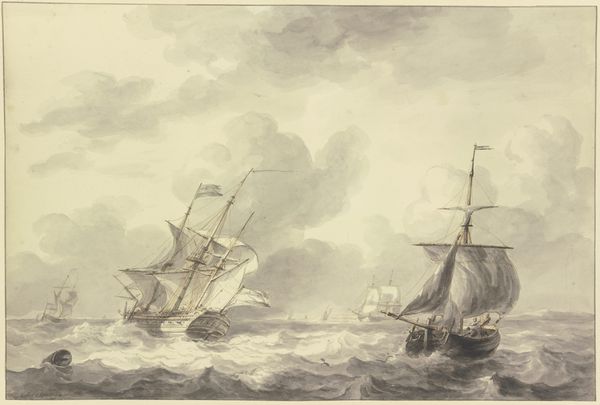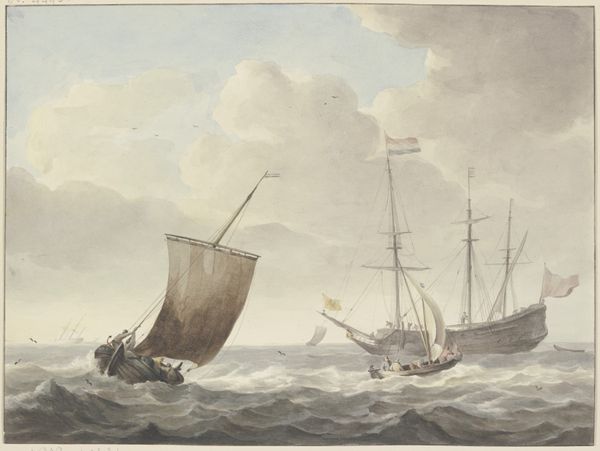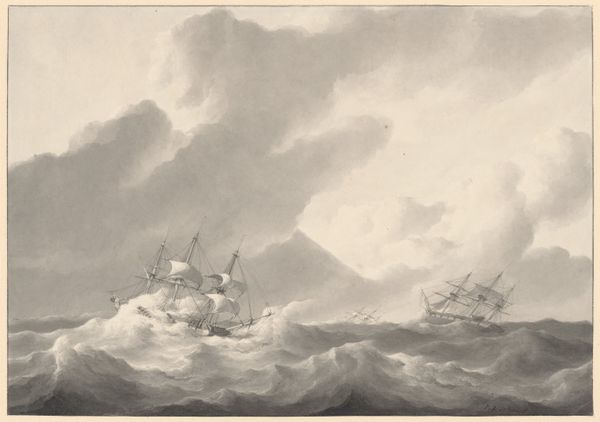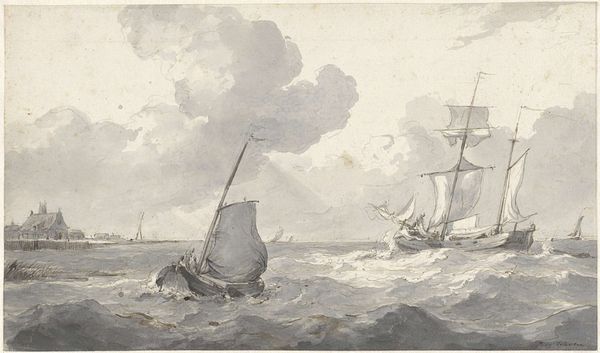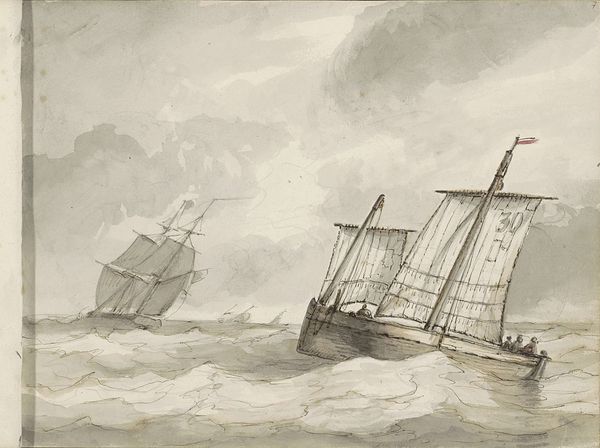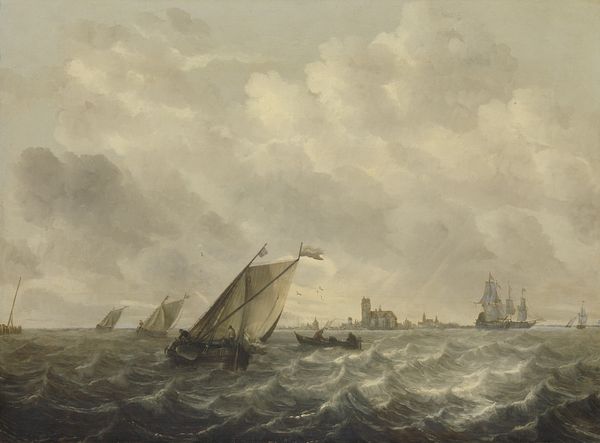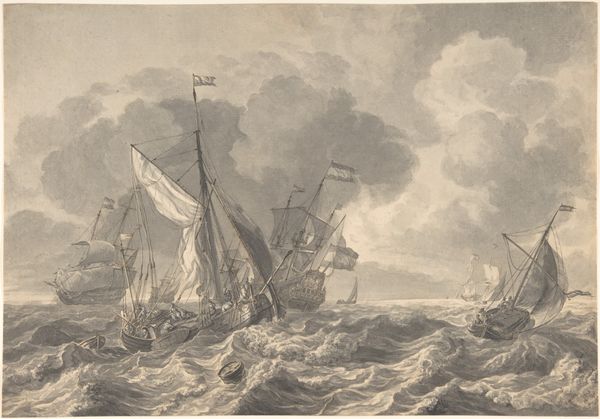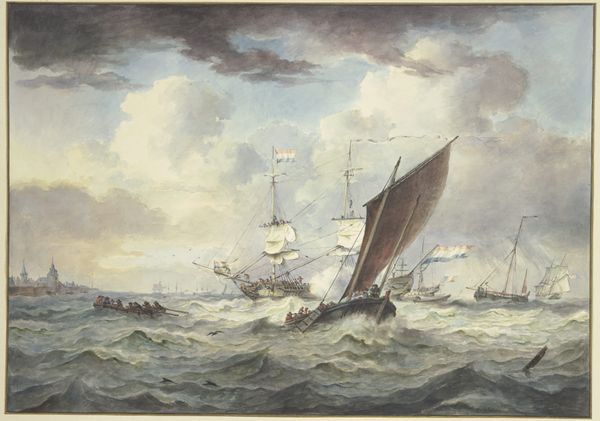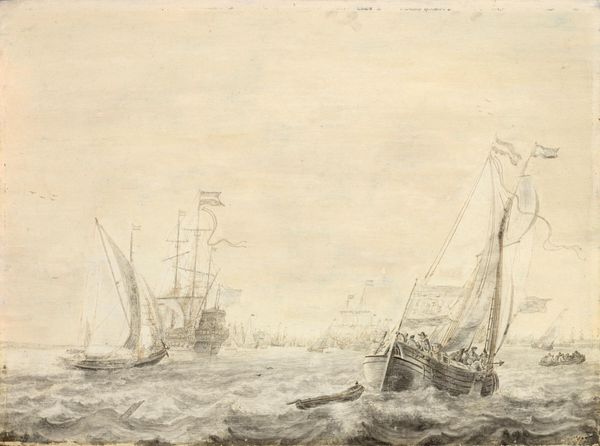
Drei Schiffe und Boot nach rechts, viertes Boot ist in die Brandung eines Felsens geraten.
0:00
0:00
drawing, watercolor, ink, indian-ink
#
drawing
#
16_19th-century
#
baroque
#
pencil sketch
#
landscape
#
watercolor
#
ink
#
pencil drawing
#
indian-ink
#
watercolour illustration
#
watercolor
#
realism
Copyright: Public Domain
Curator: This is "Drei Schiffe und Boot nach rechts, viertes Boot ist in die Brandung eines Felsens geraten." Editor: It looks turbulent! A seascape rendered in gray ink and watercolor washes - everything seems tossed about in the angry sea. What was the artist going for here, mood wise? Curator: It’s by Martinus Schouman, an artist from the 18th or 19th century, made with ink and watercolor and offers, I think, more than just raw emotion. Editor: True, the use of light and shadow, particularly in rendering the churning water, suggests Schouman’s skill. It feels both precise and frantic; the artist captures how relentless nature can be, particularly towards man-made crafts in trade and transport. It makes me wonder about the labor involved in ship making and sea navigation, which remains risky and precarious, even with more advanced boats today. Curator: Consider the ship striking the rocks. The rock itself is stoic, tall and resilient as the ships fall victim to the storm, underscoring our constant struggle to overcome nature, a powerful and universal metaphor that reflects psychological dimensions. Editor: Certainly. I'm curious though about the material processes of creating such images in that period. Did Schouman, for example, make preliminary pencil sketches, then apply the ink washes to get such subtle gradations of tone? Were these quickly made on the spot in front of the water? It must've been, judging by the immediacy of it. Curator: We may only guess at that but know these ship images reflected and amplified the growth of oceanic transportation, trade, and all that it represents—exploration, mercantilism, colonialism… it presents more complex aspects of continuity to us today. Editor: Definitely. So much history and manual work encoded into such delicate layers of material and process... I appreciate the immediacy of the medium. Curator: For me it speaks to those intangible powers in constant motion that still stir something elemental inside of us. Editor: I agree—seeing the labor within makes me respect its power all the more.
Comments
No comments
Be the first to comment and join the conversation on the ultimate creative platform.
